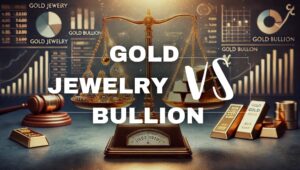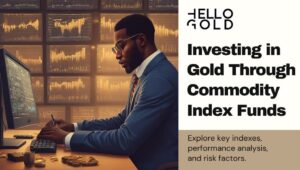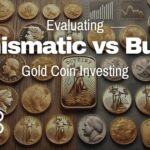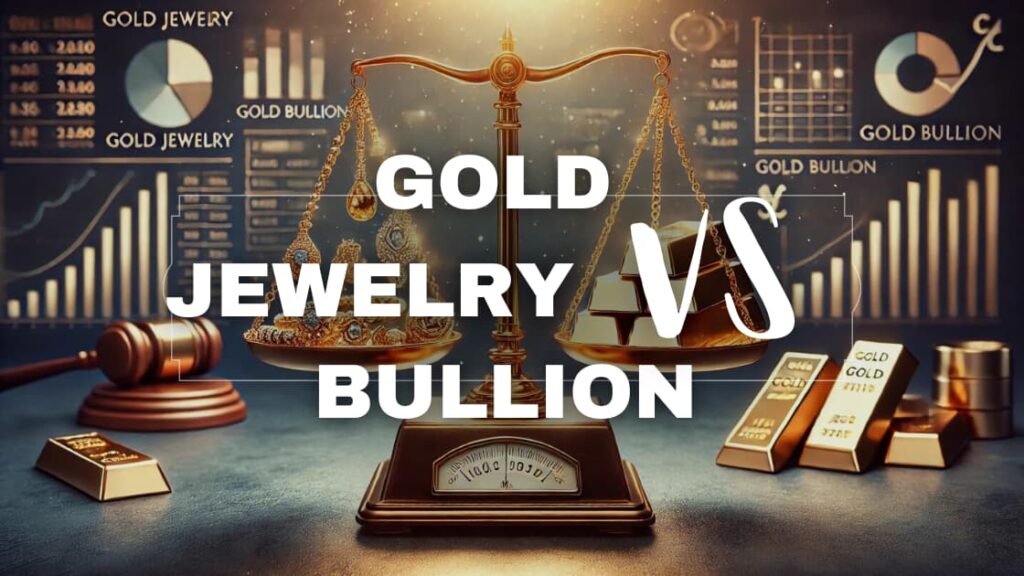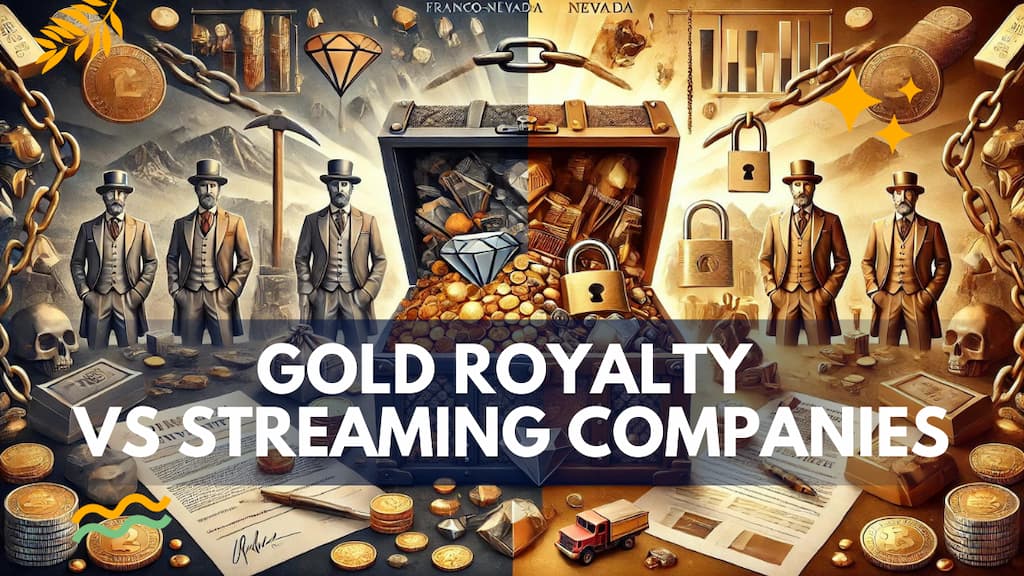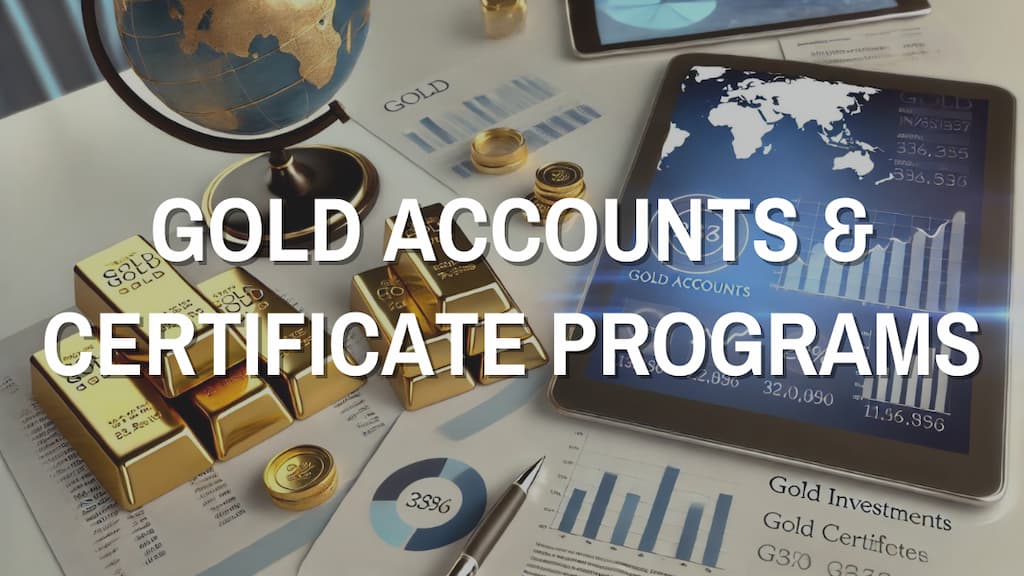For thousands of years, precious metals like gold, silver, platinum, and palladium have been wanted for their beauty and worth.
But there’s more to why people like them than just looks. These metals have special features that make them good investments today.
Learn about the key reasons why precious metals are popular and find out the specific qualities and money-making potential of each metal.
The Fundamental Appeal of Precious Metals
In the world of investing, there’s something undeniably captivating about precious metals. They’ve captivated cultures for thousands of years, adorning royalty, and serving as a cornerstone of wealth.
But their appeal goes far beyond their aesthetic value. Gold, silver, platinum, and palladium each possess unique qualities that make them sought-after assets in the modern investment landscape.
What exactly makes precious metals so special? Let’s explore the fundamental factors that underpin their attraction.
Intrinsic Value and Scarcity
Precious metals like gold, silver, platinum, and palladium carry an intrinsic value that stands the test of time. They aren’t just valuable because we say so-these metals have unique properties that make them universally desirable.
Take gold, for instance-it has been cherished for its beauty, malleability, and resistance to tarnish for thousands of years. It’s the metal of kings and queens, a symbol of wealth and power across civilizations.
And platinum? Even rarer than gold, its scarcity and durability have made it a prized possession for the elite.
But it’s not just about rarity and aesthetics. Silver and palladium also hold immense intrinsic value.
Silver has been used as currency and in jewelry for centuries, and its industrial applications in electronics, solar panels, and healthcare continue to drive demand.
Palladium, on the other hand, is a vital component in automotive catalytic converters, making it indispensable in the modern world.
Here’s the kicker: while governments can print more money, they can’t create more precious metals. The global supply is finite, and that’s a big part of why these metals hold their value.
Owning a piece of gold, silver, platinum, or palladium gives you the psychological comfort of having something tangible and universally valued. It’s like holding a piece of history in your hands, something that has been and will continue to be valuable no matter what happens in the world.
Hedging Roles: Inflation, Currency, and Crisis
When inflation starts eating away at the value of your cash, precious metals can be your best friend.
Remember the 1970s? Inflation was rampant, and savvy investors turned to gold as a safe haven.
As the purchasing power of currency eroded, the value of gold rose significantly, demonstrating its potential as a hedge against the ravages of inflation.
However, inflation is not the only area where precious metals excel. They also act as a safeguard against currency devaluation and economic crises.
According to the Bureau of Labor Statistics (BLS), between 2008 and 2012, the value of gold increased dramatically, reflected in a 101.1% surge in the Producer Price Index (PPI). Specifically, there was a significant jump of 50.6% in gold prices between September 2010 and September 2011, primarily driven by speculation related to an uneven recovery and market volatility.
When the value of paper money drops, the value of precious metals often rises, as investors flock to assets with intrinsic value.
This is especially true during currency crises when trust in government-issued money takes a nosedive.
Gold, in particular, is often seen as a ‘safe haven’ during times of geopolitical turmoil, wars, or political instability.
Whether it’s a financial meltdown or global conflict, precious metals tend to hold their ground, providing a sense of stability amid chaos.
Portfolio Diversification Benefits
Adding precious metals to your investment portfolio isn’t just about chasing returns; it’s about reducing risk and enhancing stability.
These metals generally have a low correlation with traditional assets like stocks and bonds. This means that when the stock market is tanking, your precious metal investments might be holding steady or even gaining value.
It’s like having a safety net that cushions the blow during market downturns.
Institutional investors commonly allocate between 5% and 10% of their portfolios to precious metals.
This strategic allocation helps to minimize drawdown risk-the risk of a significant decline in your investment value. By spreading your investments across different asset types, you create a buffer against severe market corrections or economic recessions.
It’s about having a strategic balance that ensures not all your eggs are in one basket.
However, let’s be clear while diversification can enhance stability and reduce overall portfolio volatility, it doesn’t guarantee profits or prevent losses.
The value of precious metals can be volatile, and market fluctuations are part of the game. That’s why it’s crucial to balance these metals with other investments, considering your risk tolerance, financial goals, and overall investment strategy.
The appeal of precious metals lies in their intrinsic value, scarcity, role as economic hedges, and diversification benefits. These attributes make them an essential consideration for building a resilient and balanced investment portfolio, especially in times of economic uncertainty or market volatility.
In the following sections, we’ll dive deeper into the unique characteristics and investment potential of each of these commodities.
Gold: The Timeless Standard
Gold. Just the word conjures images of shiny treasures, old empires, and lasting wealth.
This famous precious metal has been valued for thousands of years, holding a special place in human history and financial markets alike.
But why does gold have such lasting appeal, and what makes it a “timeless standard” in the world of investments?
Gold’s Monetary and Cultural Significance
Let’s start with gold’s monetary legacy.
As early as 600 BC, gold coins were made under King Croesus of Lydia, establishing gold as a standardized currency.
This practice spread rapidly across civilizations, from the Greeks and Romans to the Chinese and Indians.
Gold became the universal medium of exchange, symbolizing stability and trust in an economy.
Fast forward to the 19th and 20th centuries, and you’ll find the gold standard in full force. Countries tied their currency values directly to specific amounts of gold, ensuring economic stability and facilitating international trade.
Although we’ve moved on from the gold standard, central banks around the world still hold substantial gold reserves. It’s their safety net, a hedge against economic turmoil and market volatility.
But gold’s importance goes far beyond finance. In many cultures, gold jewelry is more than just a pretty decoration; it’s a symbol of wealth, social standing, and even faith.
Take India, for example. Gold is an integral part of religious ceremonies and weddings, representing tradition, heritage, and the passing down of generational wealth.
This cultural importance is a driving force behind the steady demand for gold, making it a unique asset that intertwines with our way of life.
Drivers of Gold Demand and Price
So, what exactly determines the price of gold? It’s a delicate balance between several factors.
First up, there’s jewelry demand, particularly in regions like India and China. For many people in these areas, gold isn’t just a luxury; it’s a must-have, deeply woven into cultural traditions.
Then there’s investment demand, which tends to spike during times of economic uncertainty. Remember the 2008 financial crisis?
As the global economy teetered, investors sought refuge in gold’s enduring value. Between the years 2008 and 2012, gold’s worth skyrocketed by over 100%, reflected in a sharp rise in the producer cost index.
Gold’s ability to maintain its value amidst chaos makes it a go-to asset during turbulent times.
Central banks also play a significant role in influencing gold prices.
When they start stocking up on gold reserves, it sends a powerful signal to the market about gold’s enduring value.
Recent trends show that central banks in countries like Russia and China are increasing their gold holdings, boosting demand and, consequently, prices.
On the supply side, gold mining production and recycling are crucial factors.
While new mining projects contribute to the supply, they’re not without challenges. Regulatory hurdles, environmental concerns, and rising production costs can limit the influx of new gold.
Recycling, especially from existing jewelry, helps meet demand and keeps the supply chain dynamic and responsive to market needs.
Methods of Investing in Gold
Now, let’s talk about how you can get in on the gold action. There are several ways to invest, each with its own set of pros and cons.
Physical gold, like bars, coins, and jewelry, is the most direct method. You get to hold the tangible asset, but it comes with additional costs like premiums over the spot price, storage fees, and insurance.
Depending on your preference, you can store your gold at home (with appropriate security measures) or opt for secure vaults provided by financial institutions.
If convenience is your priority, gold Exchange-Traded Funds (ETFs) and mutual funds might be the way to go.
These financial instruments track the price of gold and can be easily bought and sold on stock exchanges. They offer liquidity and lower costs compared to physical gold, but they do come with management fees that can eat into your returns over time.
For those with a higher risk tolerance, gold mining stocks offer a leveraged play on gold prices. Investing in companies that mine gold can yield substantial returns, especially when gold prices are on the rise.
However, these stocks come with risks related to the operational efficiency of the mining companies, regulatory changes, and fluctuating production costs. It’s a volatile market, but potentially rewarding for those who can navigate it skillfully.
Industrial and Technological Applications of Gold
Gold’s versatility extends far beyond the realm of finance and jewelry.
In the world of electronics, gold’s excellent conductivity and resistance to corrosion make it an indispensable component.
It’s used in high-end connectors, semiconductors, and circuit boards, ensuring the reliability and performance of our electronic devices.
In the medical field, gold nanoparticles are revolutionizing diagnostics and treatment methods.
Their unique properties enable precise drug delivery systems, improving treatment efficacy while minimizing side effects.
Gold’s biocompatibility also makes it suitable for medical implants and prosthetics, further highlighting its versatility.
The potential of gold doesn’t stop there. Its catalytic properties are being leveraged in renewable energy sectors like fuel cells and solar panels, enhancing their efficiency and performance.
Researchers are continuously exploring new ways to harness gold’s unique characteristics in cutting-edge technologies, such as advanced computing and space exploration.
As we push the boundaries of innovation, gold’s role in developing next-generation materials and devices becomes increasingly vital.
Gold isn’t just an investment; it’s a cultural icon, a safe haven asset, and a vital component in cutting-edge technologies. Its diverse applications and enduring value make it an appealing addition to any investment portfolio.
Whether you’re fascinated by its historical significance, its potential to safeguard your wealth, or its role in shaping the future, gold’s shine is undeniable.
As economies evolve and technologies advance, gold remains a steadfast symbol of stability and a promising avenue for diversification and growth.
Silver: More than Just the ‘Poor Man’s Gold’
Gold often takes the spotlight in the precious metals arena, but silver deserves a closer look.
This versatile metal isn’t just a cheaper alternative; it’s a dynamic asset with a dual identity.
Silver serves as both a traditional store of value and a critical component in modern industry, making it a unique and potentially lucrative investment opportunity.
Silver’s Dual Role: Precious and Industrial Metal
Silver’s unique appeal lies in its dual nature.
On one hand, it has been a trusted store of value for centuries, used in coins, jewelry, and as a traditional hedge against economic uncertainties.
Just like its golden counterpart, silver has a rich history of preserving wealth across generations.
But what truly sets silver apart is its role as an industrial workhorse.
Over half of all silver demand comes from industries like electronics, solar energy, and healthcare. Its exceptional electrical conductivity makes it indispensable in high-tech devices, from smartphones to computers.
And let’s not forget its antimicrobial properties, which make it invaluable in medical applications like wound dressings and advanced drug delivery systems.
So while gold might be the shiny star of the show, silver is the unsung hero quietly powering our modern world.
The Silver Price Story: Volatility and Potential
If there’s one thing you need to know about silver, it’s that its price can be quite the roller coaster ride. Unlike gold, which is driven mainly by jewelry and investment demand, silver’s price is heavily influenced by its industrial uses.
This dual demand makes the silver market more volatile.
Think about it – when the tech industry is booming, the demand for silver skyrockets, driving up prices.
But during economic downturns, that same industrial demand plummets, leading to price declines.
Silver’s volatility is due to its smaller market size compared to gold. A smaller market means less liquidity, leading to more pronounced price movements.
This volatility can be a double-edged sword. On one hand, it offers the potential for outsized gains during bull markets. But on the other, it can lead to significant losses during downturns.
To get a sense of silver’s relative value, investors often look at the comparative value of gold and silver.
When the ratio is high, it suggests that silver is undervalued compared to gold, potentially signaling a buying opportunity. Conversely, a low ratio might indicate that silver is overvalued, and it’s time to take some profits.
Some analysts argue that this metric should be around 16:1, suggesting that silver could reach $150 per ounce if aligned with current gold prices.
Investing in Physical Silver vs. Paper Instruments
When it comes to investing in silver, you have several options, each with its own pros and cons.
Physical silver, like bars and coins, offers direct ownership of the metal. There’s something reassuring about holding that tangible asset in your hands, knowing you have a piece of history and a store of value.
Physical silver usually comes with higher markups above the market price compared to gold, reflecting minting and distribution costs. You’ll also need to factor in costs for storage and insurance, especially for larger quantities.
If convenience is what you’re after, silver investment vehicles like straightforward tradable funds and mutual funds could be a suitable option.
These financial products track the price of silver and can be easily traded on stock exchanges, offering liquidity and lower entry costs.
But they don’t provide ownership of the physical metal, which might be a dealbreaker for some investors.
For those willing to take on more risk, silver mining stocks offer a way to gain leveraged exposure to silver prices.
Investing in mining companies can bring lucrative profits, particularly during periods of rising silver prices.
But be aware, this approach carries hazards tied to the operational capabilities of the miners, shifting regulations, and variable production expenses.
Silver’s Growing Industrial Importance
It’s easy to be distracted by gold, but don’t overlook silver’s growing importance. This versatile metal is at the forefront of technological innovation and the global shift towards sustainability, making its industrial demand an increasingly significant factor in its value.
Take the solar energy sector, for example.
Silver is a key component in the production of solar panels, helping to convert sunlight into electricity efficiently.
As countries around the globe strive to meet their renewable energy targets, the demand for silver in solar technology is expected to skyrocket.
But that’s not all.
The rise of electric vehicles (EVs) is another area where silver shines. It’s used in various components of EVs, including batteries and electrical connections.
As EV adoption increases, so will the demand for silver.
We must also consider the rollout of 5G technology. With its superior conductive properties, silver is playing a crucial role in ensuring high-speed, reliable communication networks.
In the medical field, silver’s antimicrobial properties are becoming increasingly important. It’s used in wound dressings, medical devices, and coatings to prevent infections.
As medical technology advances, the applications of silver are likely to expand, driving further demand.
Even though gold is often regarded as the traditional safe haven, silver is emerging as the metal of the future, powering our technological and sustainable advancements.
Silver is far more than just “poor man’s gold.” Its dual role as a precious and industrial metal, coupled with its price volatility and investment potential, makes it a compelling option for investors seeking diversification and growth opportunities.
Whether you’re drawn to its historical significance or its potential to shape the future landscape, silver deserves a spot in your investment portfolio.
Platinum: Dense, Rare, and Perplexing
Platinum, a dense and strikingly white metal, occupies a unique niche in the world of precious metals. Its rarity, coupled with an intriguing blend of beauty and industrial utility, has long drawn both investors and industries alike.
Platinum’s Precious Qualities and Industrial Importance
Let’s start with the rarity factor. Platinum is mined at a mere fraction of the rate of gold, with global production hovering around 190 metric tons annually. To put that into perspective, gold production is a staggering 3,300 metric tons per year.
This scarcity is what lends platinum its prestigious status, especially in the world of fine jewelry. Its bright, lustrous appearance and substantial weight make it a favorite choice for engagement rings and luxury timepieces.
Furthermore, platinum’s resistance to tarnishing ensures your cherished pieces retain their beauty for generations.
But attraction allure extends far beyond its aesthetic appeal. Its unique properties, like a high melting point and resistance to decay, make it an essential element in various industries.
Take the automotive sector, for instance. Platinum plays a critical role in catalytic converters, helping to reduce harmful emissions from vehicles.
As global emissions standards become more stringent, the demand for platinum in this application remains robust.
Another area where platinum shines is in fuel cell technology. These devices, which generate electricity through a chemical reaction, often rely on platinum as a catalyst to boost efficiency and lower operating temperatures.
As the world pivots towards cleaner energy solutions, platinum’s role in this burgeoning field could become increasingly significant.
Platinum Price Dynamics: Premium Puzzles
Now, let’s explore the puzzling world of platinum pricing.
Historically, this rare metal has often commanded a premium over gold due to its scarcity and industrial applications.
However, in recent years, we’ve witnessed a surprising trend: platinum trading at a discount to gold.
What’s behind this intriguing shift?
On the supply side, platinum mining is heavily concentrated in South Africa, which accounts for a staggering 70% of global production.
This geographic concentration introduces risks – labor strikes, power shortages, and regulatory challenges can all disrupt supply and cause price spikes.
In fact, prolonged strikes in South African mines have historically led to sharp increases in platinum prices, highlighting the market’s sensitivity to supply disruptions.
But the demand side of the equation is equally complex.
A significant driver of platinum demand has been its use in catalytic converters for diesel engines. However, the 2015 diesel emissions scandal dealt a blow to this market.
As consumers and manufacturers turned away from diesel vehicles, the need for platinum in this automotive application waned. Moreover, the rise of electric vehicles, which don’t require catalytic converters, poses a long-term threat to platinum’s automotive demand.
Despite these challenges, there are glimmers of hope on the horizon.
The development of hydrogen fuel cell technology, which utilizes platinum as a catalyst, could create new avenues for demand growth.
Additionally, as industrial applications evolve and new technologies emerge, platinum’s unique properties may find increased utilization beyond the automotive sector.
Investing in Platinum: Navigating a Niche Market
So, how can you get in on the platinum action? There are several investment avenues to consider, each presenting its unique blend of advantages and trade-offs.
For those who value the satisfaction of physical ownership, platinum bars and coins offer a direct investment in the metal itself.
However, the selection of platinum products is typically more limited compared to gold and silver offerings. Additionally, you’ll need to factor in premiums above the spot price, which can be higher due to minting and distribution costs.
Moreover, consider the added expenses of secure storage and insurance to protect your tangible assets.
If convenience and liquidity are priorities, platinum Exchange-Traded Funds (ETFs) may present a viable alternative.
These investment vehicles track the price of platinum and can be readily traded on stock exchanges, akin to traditional stocks.
However, it’s worth noting that platinum ETFs tend to be less liquid than their gold and silver counterparts, which can impact transaction costs and pricing.
For adventurous investors seeking high potential rewards, platinum mining stocks offer an amplified exposure to the metal’s price movements. By investing in companies involved in platinum mining, you can magnify your stake in price fluctuations.
However, this approach carries additional risks linked to mining companies’ operational capabilities, regulatory changes, and variable expenditures. It’s a market characterized by constant shifts that requires careful analysis and risk management.
Palladium: The Precious Upstart
Move over, gold and silver – there’s a new precious metal making waves in the investment world.
Palladium, often overlooked in the past, has emerged as a dynamic and potentially lucrative asset, drawing in investors with its unique blend of scarcity, industrial demand, and exciting price potential.
Explore the world of palladium and discover what makes this precious metal such an intriguing investment opportunity.
Palladium’s Precious and Industrial Profile
In the realm of valuable metals, palladium stands out as a unique player, blending its intrinsic value as a precious commodity with the industrial demand of a modern-day workhorse.
At first glance, its silvery-white luster and resistance to tarnishing make it a natural choice for high-end jewelry and investment-grade bars and coins.
However, palladium’s true strength lies in its versatility, with a dominant role in various industrial applications that drive a significant portion of its demand.
The automotive industry is palladium’s largest customer, relying on this precious metal as a crucial component in catalytic converters. These devices are essential for reducing harmful emissions from gasoline-powered vehicles, and as environmental regulations become increasingly stringent, the demand for palladium in this application continues to soar.
Beyond the automotive sector, palladium finds its way into electronics, dental procedures, and chemical applications, further cementing its industrial significance.
In electronics, palladium’s exceptional conductivity and resistance to oxidation make it an indispensable material for connectors, capacitors, and other critical components.
Its biocompatibility and durability also make it a valuable asset in dentistry, where it is used in various dental alloys.
Moreover, the chemical industry relies on palladium as a catalyst in various chemical reactions, including hydrogenation and dehydrogenation processes.
Palladium Price Explosion: Scarcity and Speculation
Palladium’s price trajectory has been nothing short of remarkable in recent years, outshining even gold at times. This meteoric rise can be attributed to a combination of supply constraints and robust demand, particularly from the automotive industry.
On the supply side, palladium production is heavily concentrated in just a few regions, with Russia and South Africa accounting for the majority of the global output. This geographic concentration introduces significant risks, as any disruptions in these regions, whether due to geopolitical instability, labor disputes, or operational challenges, can have a profound impact on supply chains and, consequently, prices.
According to industry analysts, prolonged labor disputes at South African mining operations have historically triggered sharp spikes in palladium prices, underscoring the market’s susceptibility to production interruptions. For instance, during the 2014 strikes in South Africa, palladium prices surged by over 25% within a span of just a few months.
On the demand side, the automotive industry’s insatiable appetite for palladium has been a major driving force behind the price explosion.
As emission standards tighten globally, automakers have had to increase the amount of palladium used in catalytic converters to meet these stringent regulations.
This surge in demand, coupled with supply constraints, has created a perfect storm for palladium prices.
Speculative interest has also played a significant role in amplifying price movements. Investors, sensing the supply-demand imbalance, have poured into the palladium market, further fueling price rallies.
However, this speculative trading can also make volatility worse, leading to rapid price swings in both directions.
As such, while the potential for significant gains exists, the risks associated with palladium investments cannot be overlooked.
Investing in Palladium: High Risk, High Reward
Given palladium’s unique market dynamics and the potential for substantial price movements, investing in this precious metal can be both rewarding and risky. Several investment avenues exist, each presenting its own distinct advantages and considerations.
For those seeking direct ownership, physical palladium in the form of bars and coins is an option.
However, it’s important to note that palladium products are not as widely available as their gold or silver counterparts, and they often come with higher markups over the market rate.
Additionally, investors must account for the expenditures linked to secure safekeeping and protective measures for their tangible assets.
Exchange-traded funds (ETFs) offer a more liquid alternative for palladium exposure. These financial instruments mirror the price of palladium and can be conveniently traded on stock markets, providing investors with the convenience of trading shares.
One should keep in mind, however, that palladium ETFs tend to have lower trading volumes compared to those of gold or silver, which can lead to wider bid-ask spreads and increased volatility, potentially affecting the costs and valuation of transactions.
For investors willing to embrace higher risk in exchange for potentially greater rewards, palladium mining stocks present an enticing avenue.
By investing in companies engaged in palladium extraction, investors can gain leveraged participation in the fluctuations of the metal’s value.
However, this route carries additional perils stemming from the mining firms’ operational competence, evolving industry regulations, and fluctuating production costs, among other variables.
Diversification remains a key strategy when investing in palladium. Given the metal’s price volatility and the risks associated with its supply, it is prudent to balance palladium investments with other assets within a well-diversified portfolio.
This approach can help mitigate potential losses and enhance overall portfolio stability, allowing investors to capitalize on palladium’s unique opportunities while managing the associated risks.
Assessing Your Precious Metals Allocation
Investing in precious metals is a strategic decision that requires careful thought and planning.
It’s not just about chasing the next big windfall; it’s about matching your investments with your financial goals and risk tolerance.
A well-thought-out allocation plan is key to making the most of this unique asset class.
Clarifying Your Objectives and Risk Tolerance
The first step in this process is to get very clear on your objectives. Are you aiming to keep your wealth safe, or are you looking to increase your returns with a bit more risk?
If keeping your wealth safe is your main goal, gold should be the base of your precious metals portfolio. It’s the foundation, the steady anchor that can withstand economic storms and protect your assets.
If you’re feeling bold and seeking speculative gains, expanding into silver, platinum, and palladium could be the right move.
These metals have the potential to deliver higher returns, but they also come with higher ups and downs in price.
Silver, for instance, has both precious and industrial demand, making its price movements more dynamic.
Platinum and palladium, heavily tied to industrial uses like automotive catalytic converters, also present unique opportunities for growth.
But here’s the catch: your willingness to take risks plays a big role in determining your allocation.
Precious metals like silver, platinum, and palladium tend to swing more widely in price than gold. This means they can experience larger price changes, both up and down.
If you can handle these ups and downs, a higher allocation to these metals might suit you. However, if you prefer a smoother ride, sticking with the stability of gold could be a safer bet.
Choosing the Right Vehicles: Tradeoffs Abound
Once you’ve clarified your goals and risk tolerance, the next step is choosing the right investment vehicles. And let me tell you, each option comes with its own unique challenges, so it’s essential to understand what you’re getting into.
Physical metals, like bars and coins, offer the security of owning a tangible asset. There’s something undeniably satisfying about holding a piece of gold or silver in your hands.
But this convenience comes at a price – literally. You must account for the costs of storage and insurance. Making sure your precious metals are securely stored often involves renting a safe deposit box or using a specialized storage facility.
These extra expenses can add up, so make sure to consider them in your investment strategy.
If convenience and ability to easily buy and sell are more important to you, investment options like exchange-traded products mirroring metal prices and pooled investment vehicles could be the suitable choice.
These financial instruments follow the value of the metals and facilitate seamless trading on financial markets. They offer ease of access and lower entry costs, which is a definite plus.
However, there’s a downside: they also come with administrative costs that can steadily reduce your returns over time.
It’s also important to remember that exchange-traded products and pooled investment vehicles carry market risks and do not offer the physical ownership of the metals, which might be a deal-breaker for certain individuals.
For those inclined towards greater risk, investing in mining stocks can increase your returns. Mining stocks essentially magnify the impact of metal prices.
When the value of significant precious resources such as various key metals rises, the stock prices of the mining companies can skyrocket.
But here’s the thing: this approach requires thorough research. Mining companies face operational risks, regulatory changes, and fluctuating expenses.
It’s a wild ride, and it demands a strong tolerance for risk and a willingness to navigate the complexities of the mining industry.
The Allocation Question: How Much to Each Metal?
Let’s tackle the million-dollar question: how much should you allocate to each precious metal? Well, it all comes down to balancing your financial goals, risk profile, and market convictions.
Gold often serves as the core holding in a precious metals portfolio, thanks to its stability and historical performance as a hedge against economic uncertainties.
The exact proportion of silver in your portfolio will depend on your individual circumstances and market outlook. However, many experts highlight silver’s value as a strategic asset that can enhance the efficiency of multi-asset portfolios.
By diversifying a portion of your holdings into silver, you may be able to capture its potential for growth while managing overall portfolio risk.
Financial experts generally advise keeping a diversified portfolio with a mix of asset classes, including precious metals.
While recommended allocations vary based on individual goals and market conditions, a strategic approach often involves a combination of different precious metals.
The exact percentages will depend on your tolerance for risk, investment objectives, and convictions about the future performance of each metal.
A more conservative investor might allocate a larger portion to gold, which is known for its stability, while dedicating smaller percentages to silver, platinum, and palladium. On the other hand, an investor with a penchant for embracing higher risks might choose to allocate more heavily to silver and the platinum group metals, which offer the potential for higher returns but also come with greater volatility.
Ultimately, the key is to find an allocation that aligns with your unique financial situation and investment philosophy. By diversifying across multiple precious metals, you can potentially enhance your portfolio’s risk-adjusted returns and adapt to changing market conditions.
Platinum and palladium, due to their higher volatility and industrial focus, should be allocated smaller portions, typically 5% to 10% each.
These metals offer the potential for speculative growth, driven by their critical applications in automotive catalytic converters, fuel cells, and other industrial processes. However, their price swings can be more pronounced, making them suitable for investors with higher risk tolerance.
The key point is that your allocation shouldn’t be set in stone. Precious metals prices can fluctuate significantly, and periodic rebalancing allows you to capture evolving opportunities and control risk.
For instance, if silver prices surge and its allocation exceeds your target percentage, rebalancing by selling a portion and reallocating to gold or other assets can help maintain your portfolio’s stability.
The gold-to-silver ratio, which measures the relative value of gold to silver, can provide valuable insights for rebalancing decisions.
When this ratio climbs higher, it may suggest that silver is undervalued relative to gold, presenting an opportune moment to acquire silver.
In contrast, a low ratio could signal that it’s prudent to secure gains in silver and redirect funds to gold or other metals.
To Conclude
Precious metals, like gold, silver, platinum, and palladium, offer unique investment chances beyond their beauty and worth. Their built-in value, scarcity, and role in balancing against inflation and currency losing value make them attractive options for making your investment portfolio more diverse.
Gold’s historical importance, silver’s dual part as traditional store of value and modern industry, platinum’s prestigious place and industrial uses, and palladium’s mix of built-in value and industrial demand give investors different ways to explore.
To take full advantage of these assets, consider your money goals, risk tolerance, and strategic allocation. Choose the right investment vehicles and start exploring precious metals as part of your diverse investment portfolio today.




